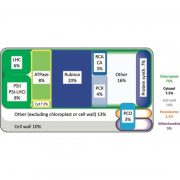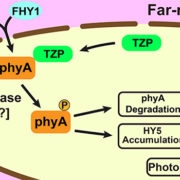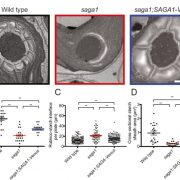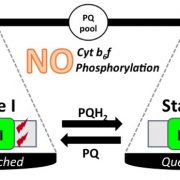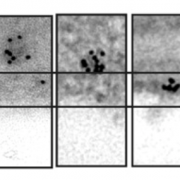Natural variation within a species for traits underpinning C4 photosynthesis (Plant Physiol)
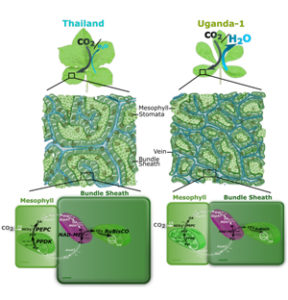 While C4 photosynthesis is relatively well understood, the research community is still some distance from converting a C3 crop to one that performs C4 photosynthesis. There are many reasons for this, including the complex requirement to reconstitute Kranz leaf anatomy in a C3 species, and the elusive search for regulators of C4 gene expression. The classical approach for identifying such regulators would be through quantitative trait loci (QTL) mapping or a genome wide association study (GWAS). However, these methods rely on the presence of natural variation of a phenotype within a species, something as yet undiscovered for C4 photosynthesis. In this manuscript, Reeves et al demonstrated that accessions of Gynandropsis gynandra collected from Asia and Africa possessed significant variation in both physiological and anatomical C4 traits, providing the variation necessary to perform QTL mapping or GWAS. In addition, these accessions could be hybridised and produced fertile offspring. This important discovery provides the opportunity to identify the components regulating C4 photosynthesis through classical genetics. (Summary by Mike Page) Plant Physiol 10.1104/pp.18.00168
While C4 photosynthesis is relatively well understood, the research community is still some distance from converting a C3 crop to one that performs C4 photosynthesis. There are many reasons for this, including the complex requirement to reconstitute Kranz leaf anatomy in a C3 species, and the elusive search for regulators of C4 gene expression. The classical approach for identifying such regulators would be through quantitative trait loci (QTL) mapping or a genome wide association study (GWAS). However, these methods rely on the presence of natural variation of a phenotype within a species, something as yet undiscovered for C4 photosynthesis. In this manuscript, Reeves et al demonstrated that accessions of Gynandropsis gynandra collected from Asia and Africa possessed significant variation in both physiological and anatomical C4 traits, providing the variation necessary to perform QTL mapping or GWAS. In addition, these accessions could be hybridised and produced fertile offspring. This important discovery provides the opportunity to identify the components regulating C4 photosynthesis through classical genetics. (Summary by Mike Page) Plant Physiol 10.1104/pp.18.00168


